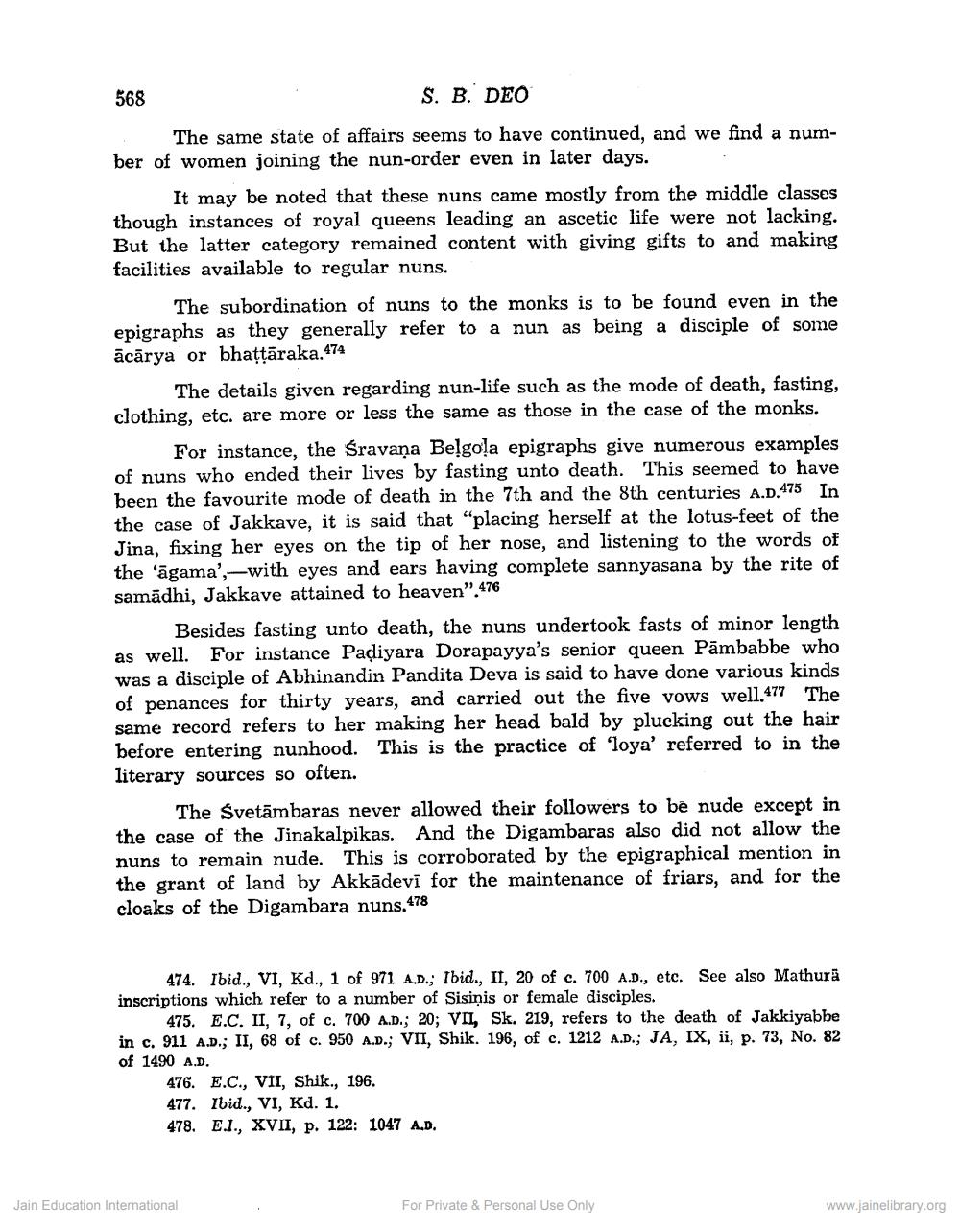________________
568
S. B. DEO The same state of affairs seems to have continued, and we find a number of women joining the nun-order even in later days.
It may be noted that these nuns came mostly from the middle classes though instances of royal queens leading an ascetic life were not lacking. But the latter category remained content with giving gifts to and making facilities available to regular nuns.
The subordination of nuns to the monks is to be found even in the epigraphs as they generally refer to a nun as being a disciple of some ācārya or bhattāraka.474
The details given regarding nun-life such as the mode of death, fasting, clothing, etc. are more or less the same as those in the case of the monks.
For instance, the Śravaņa Belgola epigraphs give numerous examples of nuns who ended their lives by fasting unto death. This seemed to have been the favourite mode of death in the 7th and the 8th centuries A.D.475 In the case of Jakkave, it is said that "placing herself at the lotus-feet of the Jina, fixing her eyes on the tip of her nose, and listening to the words of the 'āgama',—with eyes and ears having complete sannyasana by the rite of samādhi, Jakkave attained to heaven”.476
Besides fasting unto death, the nuns undertook fasts of minor length as well. For instance Padiyara Dorapayya's senior queen Pāmbabbe who was a disciple of Abhinandin Pandita Deva is said to have done various kinds of penances for thirty years, and carried out the five vows well.477 The same record refers to her making her head bald by plucking out the hair before entering nunhood. This is the practice of 'loya' referred to in the literary sources so often.
The Svetāmbaras never allowed their followers to be nude except in the case of the Jinakalpikas. And the Digambaras also did not allow the nuns to remain nude. This is corroborated by the epigraphical mention in the grant of land by Akkādevī for the maintenance of friars, and for the cloaks of the Digambara nuns.478
474. Ibid., VI, Kd., 1 of 971 A.D.; Ibid., II, 20 of c. 700 A.D., etc. See also Mathura inscriptions which refer to a number of Sisiņis or female disciples.
475. E.C. II, 7, of c. 700 A.D.; 20; VIL, Sk. 219, refers to the death of Jakkiyabbe in c. 911 A.D.; II, 68 of c. 950 A.D.; VII, Shik. 196, of c. 1212 A.D.; JA, IX, ii, p. 73, No. 82 of 1490 A.D.
476. E.C., VII, Shik., 196. 477. Ibid., VI, Kd. 1. 478. E.J., XVII, p. 122: 1047 A.D.
Jain Education International
For Private & Personal Use Only
www.jainelibrary.org




